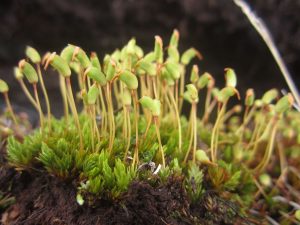 Former EEB undergraduate Nicholas Russo, now a graduate student at UCLA, published his study of birds eating mosses in sub-Antarctic Chile: Russo N.J., M. Robertson, R. MacKenzie, B. Goffinet & J.E. Jimenez. 2020. Evidence of targeted consumption of mosses by birds in sub-Antarctic South America. Austral Ecology 45: 399–403.pdf
Former EEB undergraduate Nicholas Russo, now a graduate student at UCLA, published his study of birds eating mosses in sub-Antarctic Chile: Russo N.J., M. Robertson, R. MacKenzie, B. Goffinet & J.E. Jimenez. 2020. Evidence of targeted consumption of mosses by birds in sub-Antarctic South America. Austral Ecology 45: 399–403.pdf
Abstract reads: Bryophyte consumption is uncommon among bird species globally and is often presumed incidental. We sought to determine whether herbivorous bird species of the high Andes, including the white-bellied seedsnipe (Attagis malouinus) and Chloephaga geese (C. picta and C. poliocephala), consume bryophytes, and if so, how frequently. We collected 26 seedsnipe and 22 goose droppings from alpine and sub-alpine habitats of Navarino Island, Chile and examined their contents for bryophyte diaspores. We detected bryophyte fragments in 84.6% and 90.9% of seedsnipe and Chloephaga goose faecal samples, respectively. We also extracted DNA from three bryophyte fragments isolated from goose droppings and sequenced three chloroplast loci for each sample. We inferred through a barcoding analysis that at least one species of Chloephaga goose consumes Polytrichum strictum and Notoligotrichum trichodon. The composition of 11 collected goose droppings was >50% Polytrichaceae bryophyte fragments, suggesting that at least one Chloephaga goose species foraged deliberately on moss species of this family. These new observations suggest that bryophytes are part of the diet of some high Andean birds and that birds might disperse bryophytes internally – via endozoochory – in the sub-Antarctic.